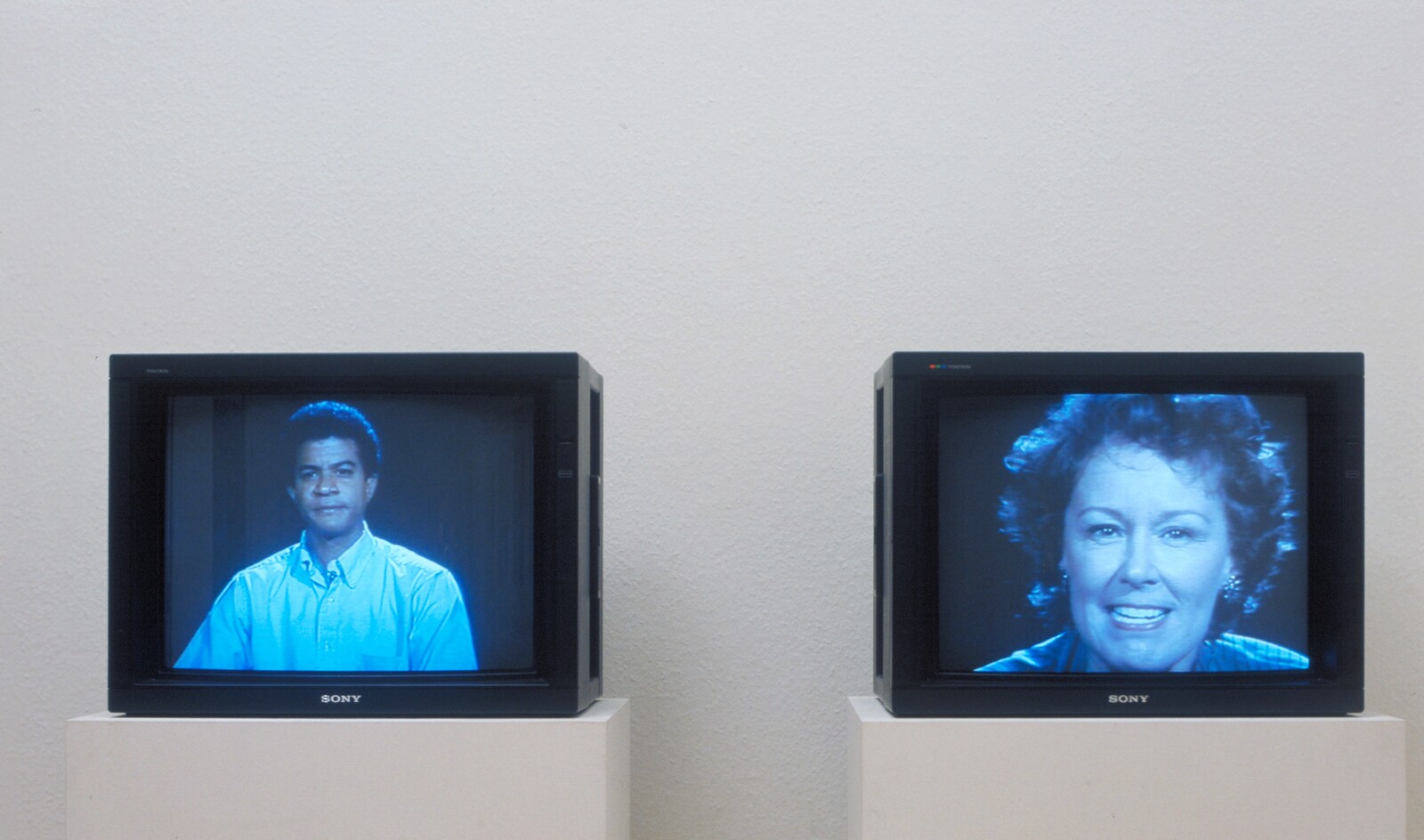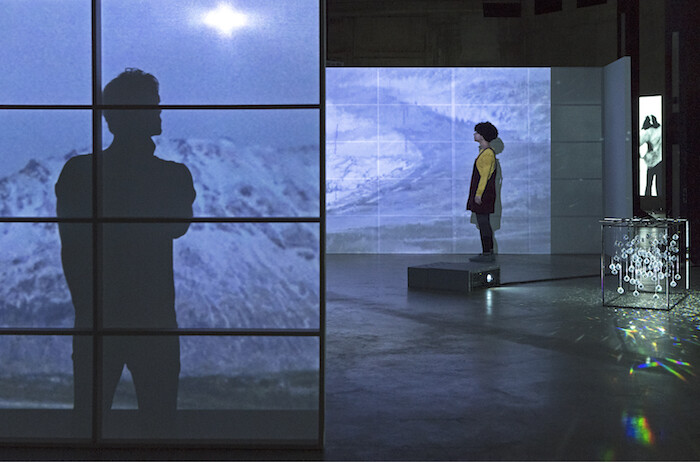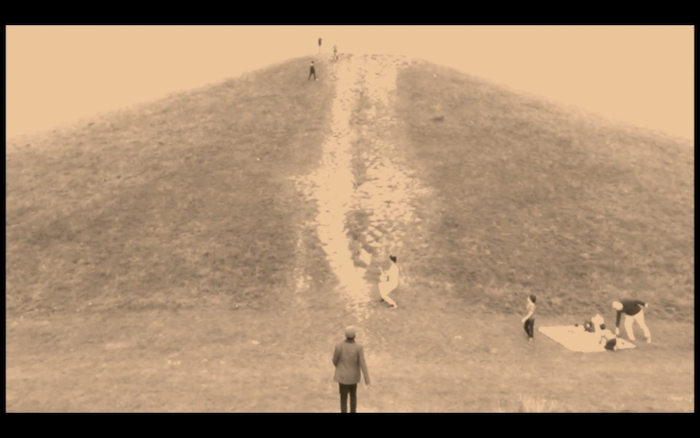Categories
Subjects
Authors
Artists
Venues
Locations
Calendar
Filter
Done
November 5, 2020 – Review
Bruce Nauman
Kevin Brazil

Even before you enter Tate Modern’s Bruce Nauman retrospective, you are put on edge. Approaching the galleries, you hear a man and woman shout “I hate, you hate, we hate!” from the screens of Good Boy Bad Boy (1985). As you queue at the exhibition’s entrance, Setting a Good Corner (Allegory & Metaphor) (1999), a video of Nauman erecting a wooden fence, assaults you with the nerve-shredding sound of a chainsaw. These sounds are deeply discomforting, but that which makes you uncomfortable is also that which you cannot ignore. Discomfort makes you aware of your own body: the unease caused by screaming, or the grinding of a saw, manifests in the tensing of muscles. Yet discomfort, in never becoming unbearable, induces self-reflection: you remain aware of what unsettles you and why. Attentive, aware of one’s body, reflective: discomfort shares much with how we think we should experience art. Why then does it feel so bad?
Discomfort as a state of awareness, this retrospective reveals, has been one of Nauman’s consistent preoccupations across six decades of work. Much has been made of Nauman’s exploration of media after Conceptual Art; many have traced his influence on later artists. Yet Nauman’s achievement …
July 3, 2018 – Review
Joan Jonas
Philomena Epps

When I was a child, I received a disco ball as a birthday gift. Hung haphazardly above my bed and lit by a repurposed old desk lamp, it reflected a scintillating constellation across the ceiling. In a flick of a switch, the quotidian transformed: I had entered a secret world. A kind of Proustian magic occurs when an artwork triggers not only an involuntary memory but an ineffable bodily feeling. Walking into Joan Jonas’s installations—Reanimation (2010/2012/2013) and Wind (1968)—in the East Tanks of Tate Modern did precisely that. The cavernous space had become an enigmatic new universe: the rough walls animated by shimmering video projections, with crystal spheres refracting flickering light, and the howling noise of gale-force wind intertwining with strange percussive sounds.
Jonas’s oeuvre eludes genre. Throughout her career, she has blended technology—video screens, re-recorded backdrops, overheard projectors—into historical systems of communication, engaging with traditions of shadow puppetry, mythology, ritualistic music, and Noh theatre. Her work travels from factory lofts to wasteland docks, across landscapes and seascapes, deserts, cities, and hilltops. Jonas’s show at Tate Modern eschews a chronological retrospective in favor of a nonlinear survey paired with live performance and cinema programs. In alignment with Aby Warburg’s logic of …
November 9, 2016 – Review
“Frieze Film”; “Experimenta”; Philippe Parreno’s “Anywhen”
Herb Shellenberger

“A repetitive moment becomes eternity.” This fragment of speech, ringing through Tate Modern’s Turbine Hall in Philippe Parreno’s installation Anywhen (2016), might equally describe the frustration or elation of viewers’ experiences of moving image artworks. This season’s blockbuster exhibitions of film and video—Frieze Film (October 6–9, 2016), BFI London Film Festival’s Experimenta (October 6–16), and Parreno’s commission for Tate Modern (October 4–April 7, 2017)—showcased new works in these media through a variety of structures, some more effective than others.
When considered against the relative paucity of moving image works in the booths of Frieze Art Fair this year, the Frieze Film project—which commissioned work by Samson Kambalu, Rachel Maclean, Shana Moulton, and Ming Wong—seemed like an effort to redress the balance. The works were shown at scheduled times in the Frieze auditorium and also on national television as part of Channel 4’s Random Acts strand, which inserts three-minute shorts between programs. But to those already familiar with the oeuvres of the featured artists, this year’s commissions felt too brief; introductions to their style and ideas, rather than fully formed works.
When it is installed in an exhibition space, as at the 2015 Venice Biennale and now at London’s Whitechapel Gallery (23 August, …
June 21, 2016 – Review
Tate Modern’s Switch House
Ben Eastham

“When racism and sexism are no longer fashionable,” the Guerilla Girls asked in 1989, “what will your art collection be worth?” Predicting that “the art market won’t bestow mega-buck prices on the work of a few white males forever,” their printed notice listed 67 female artists (several of whom are now on show in the refurbished Tate Modern), at least one work by each of whom could be acquired for the price of a single Jasper Johns painting. Once fly-posted around SoHo in a grassroots campaign by the anonymous collective to protest against institutional discrimination in the art world, the poster is now prominently displayed in the world’s most visited museum dedicated to modern and contemporary art. The framed portfolio of which it is a part, Guerrilla Girls Talk Back (1985–90)—a scathing critique of the role and representation of women and ethnic minorities in twentieth-century Western culture—hangs opposite Marilyn Diptych (1962), Andy Warhol’s paean to American sex, money, and cultural imperialism.
The new Tate Modern brings forward the future envisaged by the Guerrilla Girls at the expense of a past embodied in Marilyn. The opening of a vast new wing—a coiled, ten-storey ziggurat designed by Herzog & de Meuron—is the occasion …